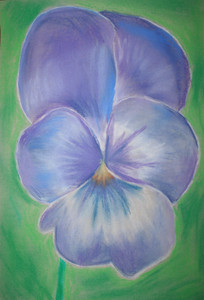Abstract Flora
- Vanessa

- Jan 7, 2019
- 2 min read
Updated: Jan 18, 2019
STEAM & Science of Color

In teaching color I found it interesting to incorporate the science behind how color is seen and perceived. This easy ties in with physics and anatomy when topics like the electromagnetic spectrum and the break down of vision is explained.
So in a break down from the research I did, light receptors within the eye transmit messages to the brain, which produces the familiar sensations of seeing colors. These colors are the product of the electromagnetic spectrum (or visible light spectrum), electromagnetic radiation that is visible to the human eye and is responsible for the sense of sight. Visible light has a wavelength in the range of about 380 nanometres to about 740 nm – between the invisible infrared, with longer wavelengths, and the invisible ultraviolet, with shorter wavelengths, when these light wave bounce off of objects the color we see is the color reflected by that object.
The Project
In theory you could combine this information of how we see color into any project, however I choose to incorporate this information into a project I call "abstract flora." On a sunny day the class and I walked around the building (outside) to the schools greenhouse to photograph the foliage and floral arrangements that have been grown and managed by the horticulture class. This past time I took my art 1 classes during the spring plant sale. Most students took the images with their phone and uploaded it to the sections google classroom page, however I do have two class cameras that were shared by the students without a phone.
What you Will Need
oil or chalk pastels
paper for mixed media
sketchbook
pencil
How To!
After introducing how color is seen and perceived, spend a day outside allowing the students to photograph their own flora images.I combine this lesson with an introduction to the artist Georgia O'Keeffe and how she abstracted her flowers by cropping and perspective shift. She was a 20th century female artist and is considered the "mother of modernism" best known for her boldly colored abstracted paintings of flowers.practice with the medium on a small colored paper that can be sealed and pasted into the sketchbook.provide sketches of the planned final product





























Comments